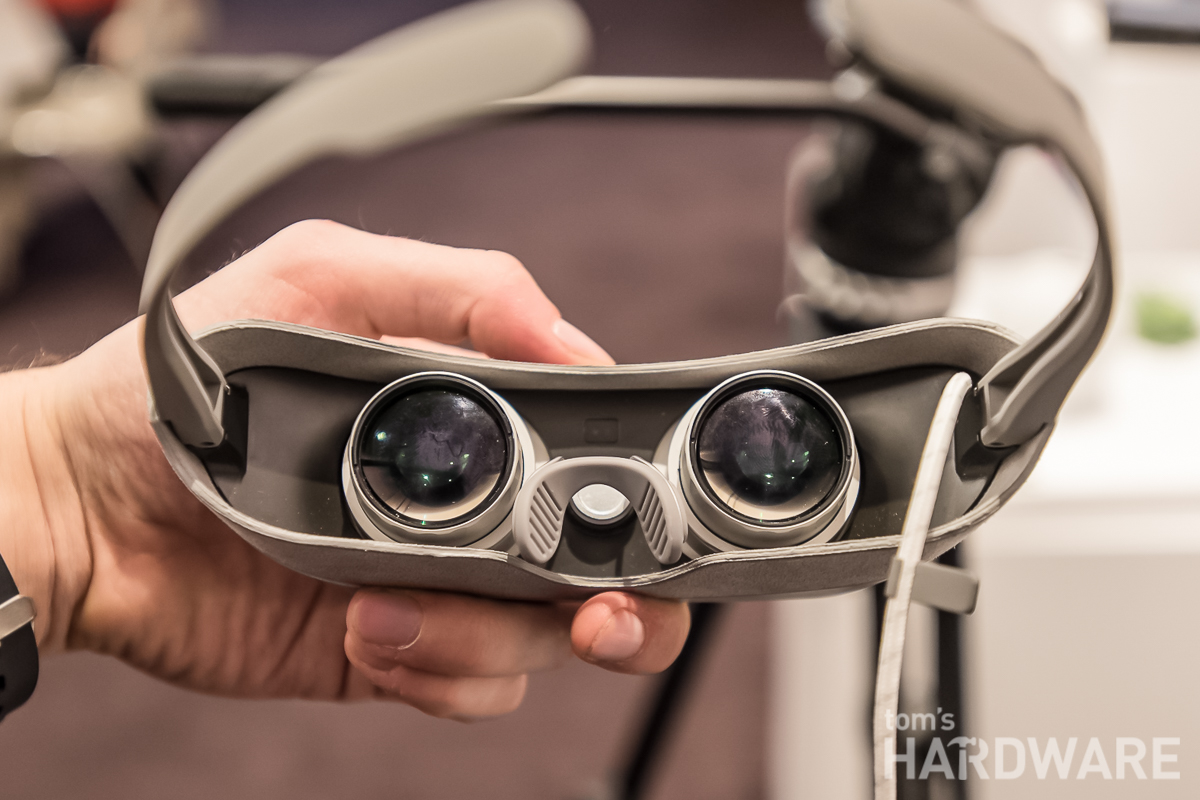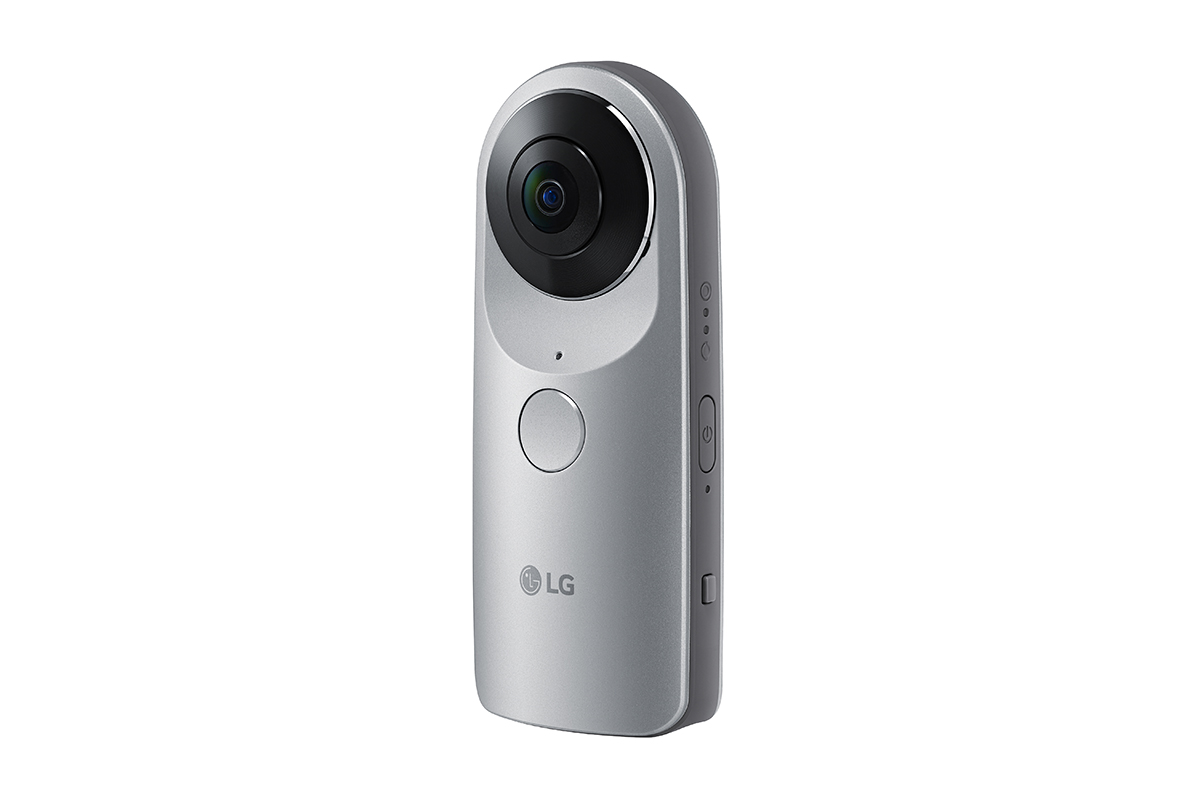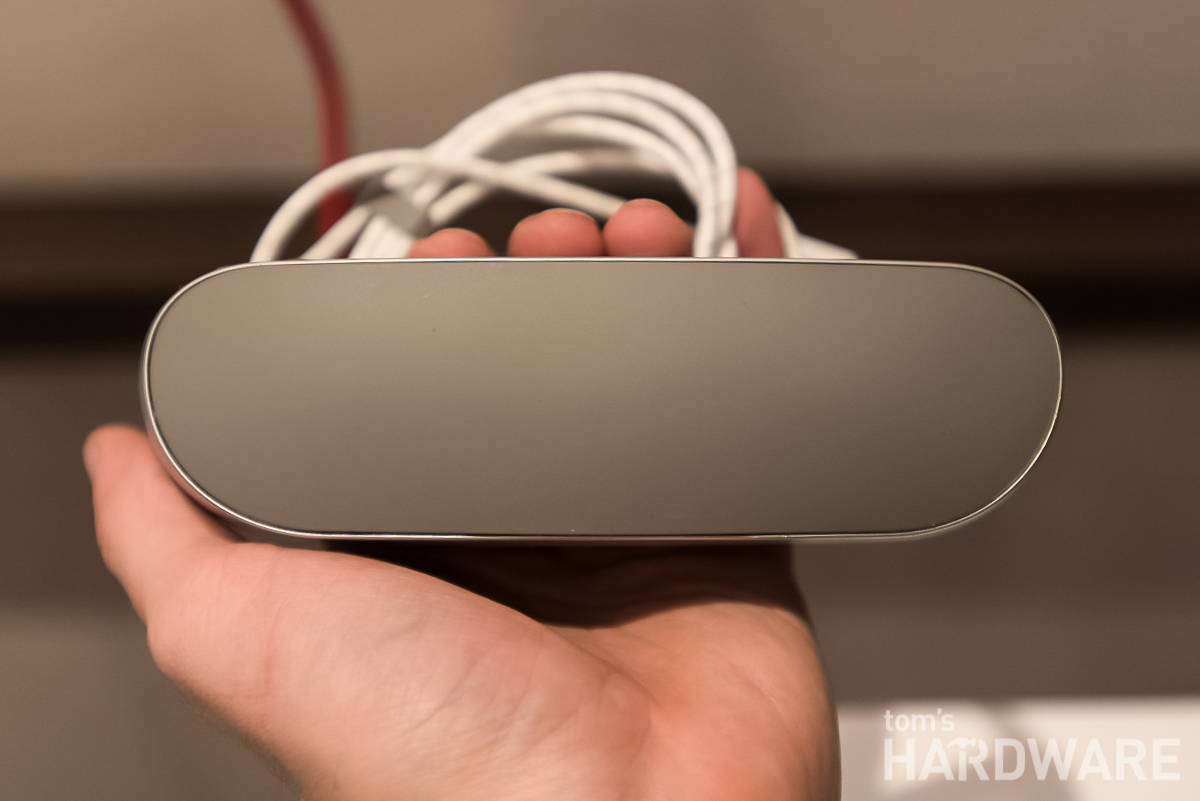LG Takes On Samsung With VR Headset And Camera, We Go Eyes-On
Today at MWC 2016 announced its latest flagship smartphone, the LG G5. With its metal unibody and innovative modular components, the G5 is clearly designed to take on the best that LG’s competition has to offer, and shows it wants to lead, not follow.
Along with the phone, LG announced a number of “LG Friends” companion devices and among them were two virtual reality devices, the LG 360 VR HMD and the LG 360 CAM 360-video connected camera. Although LG is perhaps getting into the VR game a little late (well, not as late as Apple), what it brings to the table is very interesting indeed, especially the HMD. LG is certainly taking a different approach than its major competitor Samsung, whose well-received Gear VR HMD was made in partnership with Oculus.
LG 360 VR Specifications
| Display | 1.88-inch 960 x 720 per eye, LCD |
|---|---|
| Optics | FOV 80-degrees (Virtual Image 130-foot @ 2m) |
| Sensors | 6-axis (Gyro & Accelerometer) |
| Input | Two keys (Select, Back) |
| Weight | 118g |
| Other | USB Type-C connector, Controller IC, removable light blocker, 3.5 mm |
The Future's So Bright, I Gotta Wear Shades
When we first saw the LG 360 VR at a preview event, it was a non-functioning prototype but thankfully our team at MWC 2016 has been able to go eyes-on with it today. It's one of the smallest and lightest VR HMDs we’ve ever worn, and when LG claimed today that it’s a third of the weight of other headsets we believe them. In fact, LG compared them more to a pair of sunglasses, since they fold up, and the 360 VR looks to be a lot more portable than most other VR solutions.
The reason they can be so light is that unlike other mobile VR solutions that use your phone as the display (by slotting it into the HMD), the LG 360 VR has its own display, a pair of fairly low-resolution (especially for VR) 1.88-inch 960 x 720 screens. LG claimed that it has a “20-percent sharper image” than other VR HMDs, but with screens with those specs, we’re not sure where LG came up with that statistic. When we tried them, the resolution was noticeably lower that other VR offerings.
The Power of Type-C And Snapdragon
It then plugs into your G5 via USB Type-C and leverages the power of its Snapdragon 820 SoC, which Qualcomm has said is specifically optimized for better VR experiences. In fact, the LG 360 VR is the first VR hardware that uses this powerful new chip. There are other advantages in addition to the fact that a heavy, heat generating phone isn’t strapped to your face. One is that the tethered phone’s screen can be used as a control for the VR experiences. The phone's display, for example, serves as a touchpad.
Although it has been announced as a G5 accessory and requires both Snapdragon 820 and USB Type-C to work, there’s no technical reason it shouldn’t work on other devices with comparable specs. As for the kind of content you can view on it, LG isn’t creating its own application ecosystem (unlike Samsung’s Gear VR). It is instead aiming this VR HMD to be a viewer for user created 360-stills and video, YouTube 360-video and other Google Cardboard content.
Our Experience
Unfortunately, our experience with the LG 360 VR wasn’t that positive. Yes, they are super light, but they also feel cheap, and they aren’t particularly comfortable when on your face. We watched a VR roller coaster 360-video and the resolution was poor, and the FoV wasn’t that great, especially vertically (you can see from the pictures how narrow the 360 VR is).
Get Tom's Hardware's best news and in-depth reviews, straight to your inbox.
What's more, its design isn’t very immersive. Although there is a removable “light blocker” shroud its fit to your face isn’t tight, and a lot of ambient light gets let in, which distracts from the VR experience. Focusing the individual eyepieces is also awkward (you focus the lenses inside the HMD), and there doesn’t seem to be any way to adjust the IPD.
LG 360 CAM Specifications
| Sensor | 13MP x 2 |
|---|---|
| Capture Resolution | Up to 2K |
| Optics | 200-degree wide angle |
| Audio | 3 Microphones for 5.1 Surround Recording |
| Storage | 4 GB with microSD |
| Battery | 1,200 mAh |
Unlike the 360 VR, we weren’t able to get any hands-on time with the LG 360 CAM. It does look a little like a stubbier Ricoh Theta -- it has two 13MP wide angle cameras, one on each side, to capture full 360-degree video. It has a 1200 mAh battery, 4 GB of storage, a microSD slot, and connects to the LG G5 for control. It can capture 360-video at up to 2K and has three microphones for 5.1 surround audio recording, and its footage can be uploaded to Google Street View or YouTube, and likely any other 360-video hosting service.
Because we haven’t tried the LG 360 CAM, we can’t pass any judgement on it yet, but its specs do seem reasonable for a consumer-grade 360-camera. The right price will be key to its success, of course along with its image quality and ease of use.
Not Great But Not A Bad First Attempt
As for the LG 360 VR, despite our reservations about it, the 360 VR isn’t that bad for a first VR attempt from LG and keep in mind what is being shown today are likely pre-production units. In fact, one demo unit completely fumbled head tracking, and the image turned diagonal, and kept getting worse. There’s always time for LG to go back and make some adjustments to make it more comfortable and immersive while keeps its small and light form factor.
We do hope they do this instead of just waiting for the next model because the one aspect of the 360 VR that intrigues us is the concept of a USB Type-C tethered device powering a mobile HMD. Despite the wire probably being a bit of an annoyance, this configuration simply makes more sense for mobile VR.
The headsets can be lighter and more portable; the displays won’t be constrained to a phone’s screen size and resolution, and there is the potential to add advanced sensors for either eye-tracking or positional tracking that can talk back to the connected phone. Also, along with using the phone as a controller, its screen could also potentially be a secondary display for someone to see what you’re experiencing in VR.
LG hasn’t announced any pricing or availability information yet, but we expect to see the LG 360 VR ring in for more than the Gear VR because of its built-in displays, but still come quite a bit under than the cheapest full-blown HMD. With the LG 360 CAM’s specs being quite close to the Ricoh Theta S, we expect it to be in the same price range, so around $300.
-
zambutu I like the idea of tethering a stand alone phone than having to strap your phone in. I keep my phone in a case; cases aren't compatible with gear vr. standalone wireless head unit would be best, but not for cost.Reply
I wonder if they could make a gear vr with a sealed screen and have wider phone tethering options...for 200$ -
kyle382 Reply80 Deg Fov and res of 960x720? Specs so bad it sounds like a joke.
lol dont worry, 3 months before release they will announce the price adjustment to $700 and the necessary addition of 4k screens crushing all your hopes and dreams.





